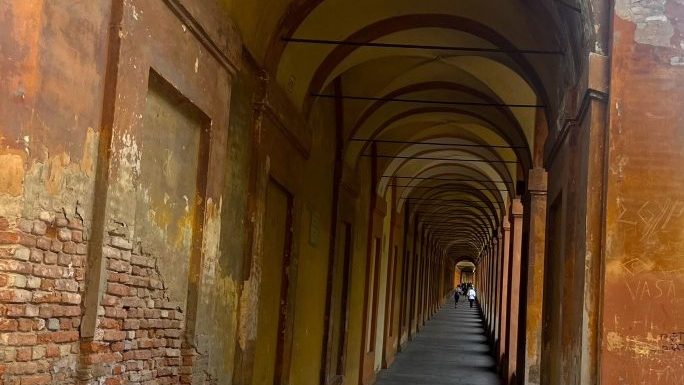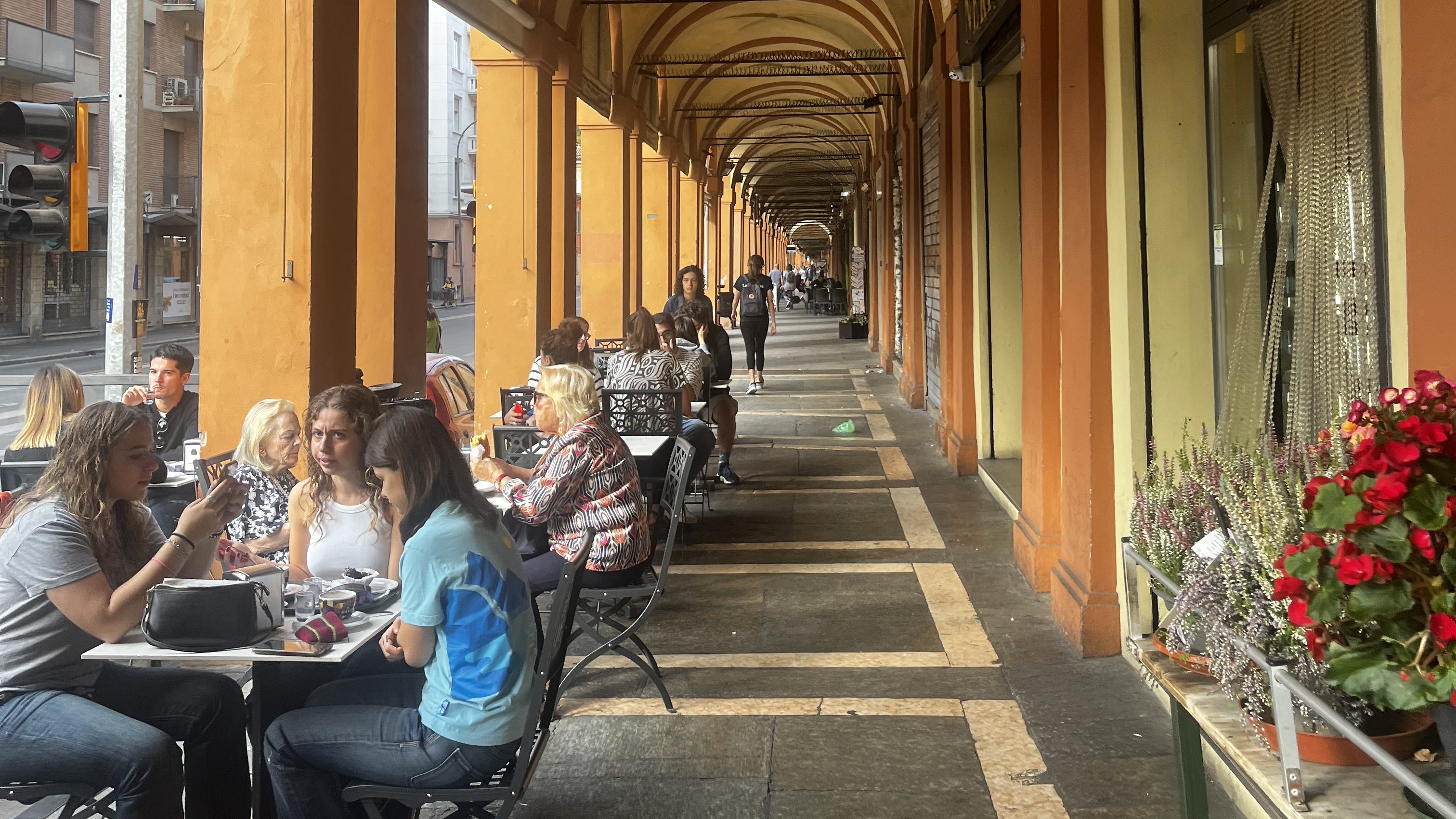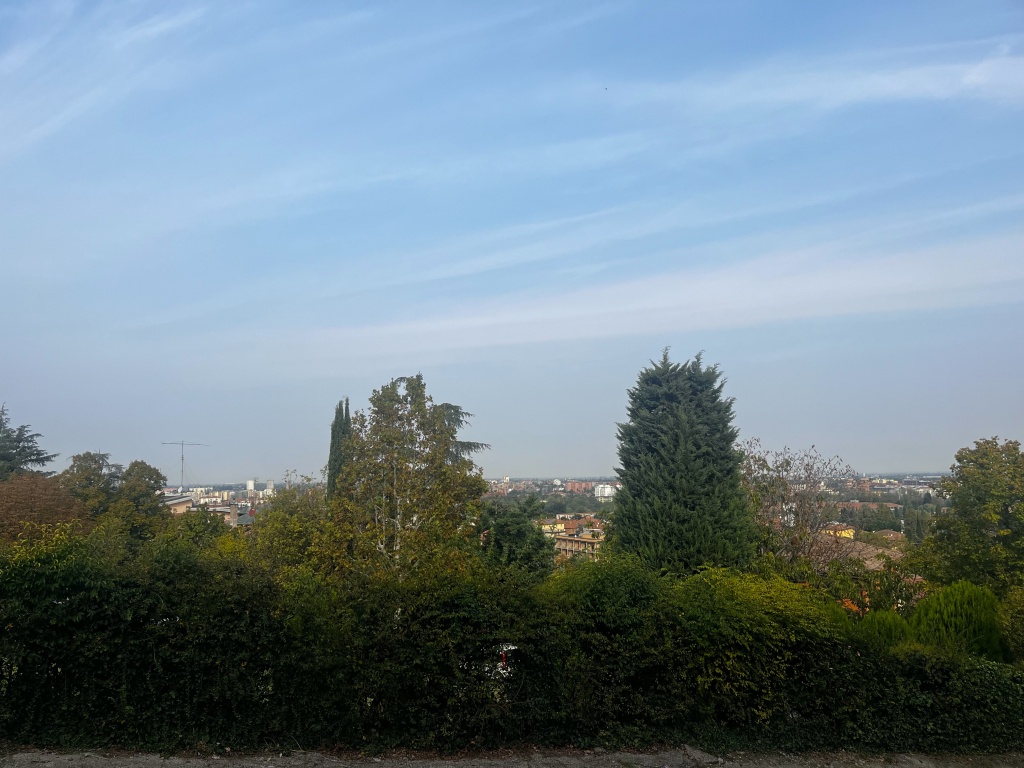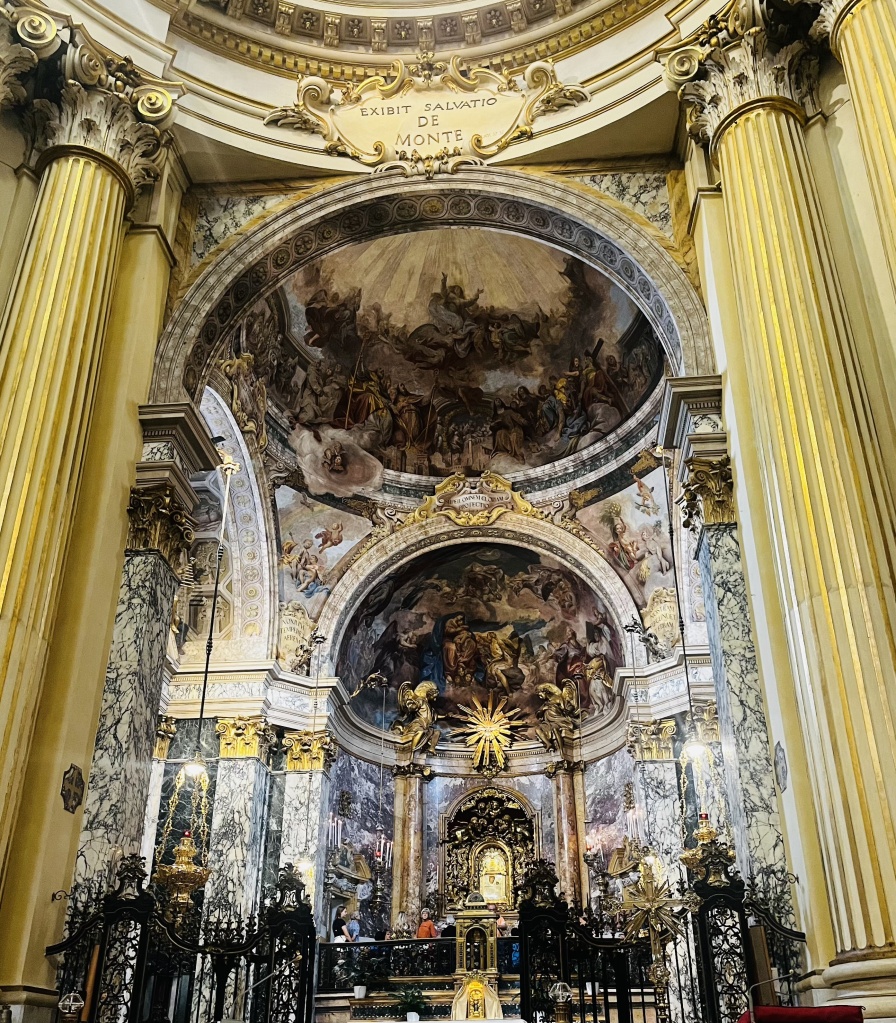
Golden light dances over the ancient hills. A flock of swifts swoop and trill in delight. Is this just sunrise, or are these celestial guides? It’s a question you may find yourself asking when you’re walking the path to the Sanctuary of San Luca, Bologna.
If you have ever felt lost, disillusioned, or uninspired, a pilgrimage is a reliable way to revive your mojo. For millennia, humans have sort spiritual rejuvenation through journeys. These might involve long, arduous expeditions over difficult terrain, but that needn’t be the case. The pilgrimage to the Basilica of San Luca, for example, is one of the gentler, more pleasant paths to transformation, with a well-maintained, easy to follow route under elegant porticos.

Bologna has a whole network of these porticos (covered arcades) extending for almost 40 km around the city. The portico leading up to the Sanctuary of San Luca is the longest in the world and has helped give the city its UNESCO world heritage status. It was built between the 17th and 18th centuries to act as both a practical and symbolic shelter for the procession of the Byzantine icon of the Madonna. The icon has been carried down from the basilica to Bologna’s Cathedral of San Pietro for the Feast of the Ascension and back again, each year for centuries.

The journey is about 4km each way with some stairs and steeper sections and takes about an hour and a half to two hours depending on the walker’s pace. It is important to note, however, that the original purpose of this pilgrimage was not a physical journey, but a spiritual one. It was designed so that pilgrims could stop to rest, reflect, and pray along the way.
With this in mind, one of the most enigmatic features of the path is the portico’s 666 arches – 666 being the number associated with the Devil. Furthermore, the shape of the portico is said to resemble a snake. So why the diabolic references on a sacred walk? These elements are thought to symbolize the Madonna defeating the Devil. This idea may have indeed occurred to the first pilgrims who were drawn to the site by the reputedly miraculous healing powers of the Madonna di San Luca.
Today, the pilgrimage is a popular way for visitors to experience the beauty of the countryside and to learn more about the region’s history. You’ll also find many Bolognesi using the portico as a fitness track, running, or walking briskly up the continuous climb. But many others still use the path as the early pilgrims did. You may hear them reciting Mysteries of the Rosary (meditations on Jesus’s life and death) or see them stopping to pray at each of the 15 chapels along the route.
For those seeking an epiphany or simply wanting a workout, the pilgrimage to San Luca literally expands horizons. At various stages along the climb it offers panoramic views over Bologna, from the soccer stadium to the Certosa (the city’s monumental cemetery), as well as the historic centre, including the Basilica of San Petronio and the Two Towers.
But even the most defiantly unspiritual may find that something happens to them on a deeper level on this walk. As you climb towards the basilica, passing the numerous chapels, joggers, and pilgrims, it is hard not to reflect on the many people who have travelled this path before you. Your feet tread the same polished stone steps that they have, you are seeing what they have seen, you are part of something that is bigger than you, a communal experience of journeying towards.

One foot in front of the other, this is how we all live, climbing upwards, sometimes resting, sometimes struggling. Yet as long as we keep going there is hope – a belief that will finally get to our destination, and when we reach it, we will somehow have changed.
Practical info:
- Start your walk early in the morning or late in the afternoon to avoid the heat and crowds.
- Wear comfortable shoes and clothing and bring water.
- Exit the old city via Porta Saragozza, follow the porticos to Arco del Meloncello, where the Via San Luca begins.
- Take your time and pace yourself, especially if you are not used to walking long distances.
- Visit the Santuario della Madonna di San Luca to see the beautiful interior and Byzantine icon.
2 responses to “Pilgrimage to San Luca: the gentle path to transformation”
Lovely, thank you, you paint a good picture with a balance of info. I will certainly try and go if I’m ever in the area.
LikeLike
Thanks Tamsing! It’s definitely worth going.
LikeLiked by 1 person